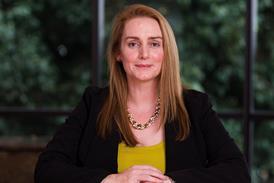In the latest ESG episode of PropCast, Christopher Wright, Norges Bank Investment Management’s head of ESG risk monitoring, explains how the sovereign wealth fund uses its size and influence to guide its investments towards better ESG outcomes.
You can listen to this podcast via Apple Podcasts or Spotify or SoundCloud or listen to it through the player below:

Norway’s discovery of oil at Ekofisk in 1969 changed the country’s fortunes. The black gold found in the North Sea allowed the state to amass considerable wealth, the surplus profits of which spurred the creation of the Government Petroleum Fund in 1990. Eight years later, Norges Bank Investment Management was set up to manage the fund on behalf of the Ministry of Finance.
“It’s really owned by the Norwegian people,” Christopher Wright explains, referring to the fact that key decisions are made in the Norwegian parliament. “It’s a sovereign fund for future generations of Norwegians.”
Now, the fund is worth more than a trillion pounds, buoyed by the historic growth of oil prices and equity markets since its inception. Of this fund, 2.5 percent – some £30 billion – is invested in real estate. And this includes some of the world’s most iconic properties, including a stake in Regent’s Street in London and the Champs Elysées in Paris. “High street retail in prime cities has lower risk and will sustain value over time,” Wright remarks. “These flagship stores have a different dynamic to the rest of the retail space.”
Logistics has also been a focus, with Norges forming a €2.4 billion JV with Prologis in 2012 to acquire a portfolio of distribution facilities across Europe. The deal is indicative of Norges’ wider strategy when it comes to unlisted property. As Wright describes: “We only select partners with deep capital and proven records that are professional, reputable, and worthy of investing the people’s money.”
But there’s another, arguably more important thread to Norges’ strategy: sustainability. Given the fund’s long-term investment horizon, green issues are at the forefront of its thinking. “When we acquire an asset, we look at how green it is, and where it needs to be in 10, 15 or 20 years,” Wright says. “Green issues shape how we acquire buildings and how we manage them.”
And naturally, deciding where to invest requires calculating risk – something that Wright oversees. “We look at the energy and carbon performance of a building,” he explains. “If it’s underperforming the local market, it carries additional risk.”
But he also acknowledges finding reliable, real-time data is difficult: “It’s a real weakness in the market. It’s very difficult to assess the energy profile of a building at the time of acquisition.” It seems attitudes are changing, however. “When we ask for that data, it no longer comes as a surprise,” Wright observes. “This will gradually change in the market as new regulations come out. It’s a growing expectation in the market.”
From the point of acquisition, Norges typically demands an improvement in the asset’s sustainability credentials. “We need sustainability to become part of the renovation process from the beginning,” Wright asserts. “And you need to set a high certification target – it concentrates peoples’ minds and drives the process.”
This concern around making its investments more sustainable extends to the core of Norges’ portfolio – equities. And this is where Wright thinks taking a proactive approach can reap dividends. “Our primary tool is engagement,” he states. “But if we don’t see the company being able to manage the transition risk appropriately, then divestment can be a last resort.”
The alternative is a situation whereby irresponsible companies aren’t held accountable by their shareholders. “You could foresee a scenario where the most responsible owners end up owning all the responsible companies and vice versa,” Wrights warns.
In the world of real estate, CRREM – the Carbon Risk Real Estate Monitor – is a project backed by Norges, open to the public and provided at no cost, that outlines decarbonisation pathways for different sectors in different countries.
In short, anyone can look at a specific area of real estate – for instance UK logistics – and see what the carbon reduction targets look like over the next 30 years. “If you’re renovating a building today, you can look at the pathway and identify what the energy intensity of the building should be in 15 years,” Wright explains. “That can specify your design plans and set your ambitions.”
From a wider policy perspective, Wright welcomes the adoption of the Taskforce on Climate-related FInancial Disclosures’ rules in the UK and actively calls for its adoption in the markets it invests in. He sees standardised disclosure as key to the market being able to price climate risk effectively.
But with or without these rules, Wright calls for companies to be transparent and predictable. “Our views are spelled out in expectation documents,” he notes. “Boards should know what our key investment principles are, and that they don’t change rapidly over time.”
The structure of the fund means Norges has to take extra care. “We’re essentially an index fund, and so we’re expected to invest in all companies in the index,” Wright explains. Given that an exchange such as the FTSE will add several hundred companies to its index each year, a level of screening is required.
“We’re seeing that a large share of the companies are Chinese, a large share are in tech and healthcare, and another share is industrials from India and Brazil, and other emerging markets,” he observes. “These are the companies that will shape the future.”
“There’s a heightened risk but we want to invest in them to capture growth,” he continues. “At the same time we want to take out the rotten apples based on the information that we have.”
You can listen to this podcast via Apple Podcasts or Spotify or SoundCloud or listen to it through the player above






























No comments yet